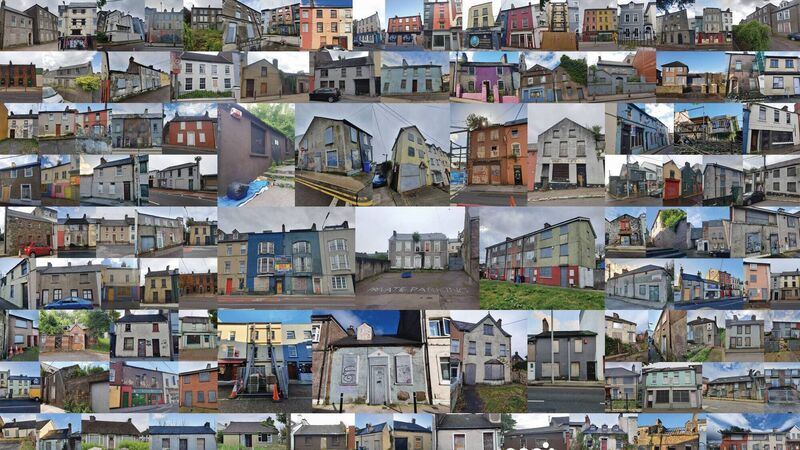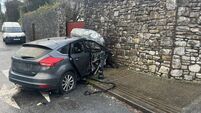Is the new vacant homes tax designed to fail?

Derelict properties are already exempt from the Local Property Tax and will also be exempt from the Vacant Homes Tax. File photo: Frank O'Connor and Jude Sherry, Anois
When it comes to housing in our Republic there’s no doubt that these are extremely stressful times for many, with estimates of 10,500 homeless and 290,000 classified as hidden homeless.
Yet we have 255,000 under-used houses that are either vacant, derelict, or holiday homes. After years of toing and froing, the Irish Government has finally decided to discourage under-use and vacancy through a Vacant Home Tax (VHT).
On face value, this is good news. Tax schemes for vacant homes have worked well in other countries, bringing homes back into use and generating revenue to re-invest in tackling vacancy and dereliction.
However, on closer examination, the introduction of a VHT seems to have been significantly compromised, to the point it could be considered virtue-signalling.
In doing so, the Irish government has failed to grab a wonderful opportunity to provide much-needed homes by disrupting the scourge of vacancy that has been impacting the economy, communities, heritage, and environment for decades.
The harsh reality is the VHT may have been designed to fail. In essence, the VHT is a 0.3% tax on the value of a vacant home — triple the Local Property Tax, currently set at 0.1029%. This is not an insignificant amount, but in comparison to the previously suggested 3% tax, it is much lower.
Taking average house prices of €320,000 the resulting mean VHT will be only €945 per year. You could argue that for many people who can afford a second home this is not a serious deterrent and for investors, it could be well viewed as insignificant given the rising rents and sales prices.
Through this VHT, Revenue is expected to raise €3m to €4m a year. This would indicate they expect to apply the tax to just over 4,000 homes, roughly 1.7% of the 255,000 homes that are not primary residents.
Incidentally, the local authorities alone could fulfill this low ambition as there are estimates of 4,000 vacant council homes across the country. It is unclear why the ambitions are so low, as according to Revenue’s own records, the VHT should be applied to 30,000 vacant homes, which would net over €29m.
Maybe one reason why the VHT expectations are so low is that it might be relatively easy for owners of vacant homes to avoid the tax.
Firstly, owners self-report if they have used a home for less than 30 days within a set 12-month period. This raises questions around why they would self-report and what proof might they need that their home has been used for more than 30 days.
There are insufficient details available at this stage to confirm if Revenue will be cross-referencing homes identified by Geodirectory (90,000) or the Local Property Tax survey (57,000) or will they be asking utility companies to share information on connections and usage?
There is also no mention that there will be a penalty for failure to report. This has been a strong deterrent elsewhere.
For instance, in Amsterdam, owners who fail to report homes empty for longer than six months are fined €9,000. It is also not clear what type of occupancy is required for 30 days. For example, does it need to be 30 consecutive days, or can short-term rentals be considered an occupation?
For the VHT to be effective, 'selling a home' should give the owner an exemption for the first year only. Yet it does not seem like Revenue is placing any time limits on this or on those homes requiring ‘significant refurbishment work’. ‘For Sale’ signs are very easy to make, as are claims of never-ending refurbishments.
Owners of the 22,000 derelict homes need not fear. Derelict properties are already exempt from the Local Property Tax and will also be exempt from the Vacant Homes Tax.
Even though there is a law in place they are also highly unlikely to be subject to the 7% dereliction levy as most local authorities only apply this to a minuscule fraction of derelict properties in their region.
In fact, a consequence of the VHT could be that owners are encouraged to make their vacant homes uninhabitable to avoid paying any tax. In essence, giving dereliction a turbo boost. All things considered, we might end up in a situation where the VHT is not applied to any homes.
Yet, in theory, it should be quick and easy to apply. The Department of Housing should have up-to-date data on vacant homes, as they have been promising to establish robust data collection methods since 2018.
Shockingly this has not been forthcoming. At a local authority level, many are yet to appoint a vacant homes officer and the Department of Housing’s Vacant Homes Unit only employs one person. This suggests that adequate resources are not in place from the outset to ensure this is a success.
The strategy of taxing a few homes a small amount is questionable. So, what could be done differently?
You can tax a lot of homes a little amount, like in parts of Canada where the Speculation and Vacancy Tax is between 0.05% and 2% (depending on ownership) and has resulted in 20,000 homes coming onto the market over four years while raising $231m.
France takes a different approach and has a 12.5% tax for the first year of vacancy which is raised to 25% in the second year targeted at a narrower definition of vacant homes.
In Scotland, Compulsory Sales Orders enable communities to buy properties that are long-term vacant while Barcelona and Amsterdam authorities use Compulsory Rental Orders to place tenants in homes that have been empty for longer than six months.
Ireland’s housing crisis is not unique, nor is our high levels of vacancy. What is unusual is that we have both at the same time. The government has an ethical responsibility to exhaust all pathways so that everyone has a home.















